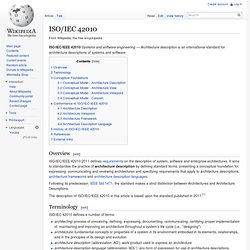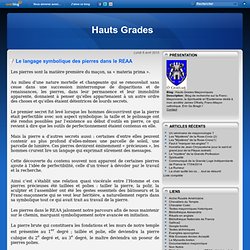

Bastien Pesce
Blues videos. Blues videos. La Pierre brute. EA - Enterprise Architecture. Jazz/Blues. Blue Note. EA - Enterprise Architecture. The Official John Mayall Website. Blues. Event-driven architecture. Building applications and systems around an event-driven architecture allows these applications and systems to be constructed in a manner that facilitates more responsiveness, because event-driven systems are, by design, more normalized to unpredictable and asynchronous environments.[2] Event-driven architecture can complement service-oriented architecture (SOA) because services can be activated by triggers fired on incoming events.[2][3] This paradigm is particularly useful whenever the sink does not provide any self-contained executive[clarify].

SOA 2.0 evolves the implications SOA and EDA architectures provide to a richer, more robust level by leveraging previously unknown causal relationships to form a new event pattern. [vague] This new business intelligence pattern triggers further autonomous human or automated processing that adds exponential value to the enterprise by injecting value-added information into the recognized pattern which could not have been achieved previously.
Event-driven SOA. SOA 2.0[edit] SOA 2.0 architecture, ("event-driven SOA"), lets business users monitor, analyze, and enrich events to make the connections among disparate events that do not at first appear to be intuitively obvious.

This makes these enriched events visible to others, especially business analysts or marketing directors, and also allows the SOA 2.0 system to possibly automate actions to take to address some unique pattern.[1] SOA 2.0 is the ability to create high-level business events from numerous low-level system events. Events are created by filtering real-time data (from middleware, applications, databases, and Web services, for example) and infusing it with defining detail such as dependencies or causal relationships discovered by correlating other events.
In practice, this relationship of streamed events is processed through a causal vector engine, which performs a lookup based on recently viewed events and assigns a causal vector to an event if a relationship is discovered. ISO/IEC 42010. ISO/IEC/IEEE 42010 Systems and software engineering — Architecture description is an international standard for architecture descriptions of systems and software.

Overview[edit] ISO/IEC/IEEE 42010:2011 defines requirements on the description of system, software and enterprise architectures. It aims to standardise the practice of architecture description by defining standard terms, presenting a conceptual foundation for expressing, communicating and reviewing architectures and specifying requirements that apply to architecture descriptions, architecture frameworks and architecture description languages. Following its predecessor, IEEE Std 1471, the standard makes a strict distinction between Architectures and Architecture Descriptions. The description of ISO/IEC/IEEE 42010 in this article is based upon the standard published in 2011.[1] ArchiMate. Insurance claim process depicted in ArchiMate.

Archimate enables modelling in different layers. ArchiMate (/ˈɑr.kɪmeɪt/ AR-ki-mayt) is an open and independent enterprise architecture modeling language to support the description, analysis and visualization of architecture within and across business domains[1] in an unambiguous way. ArchiMate is a technical standard from The Open Group and is based on the concepts of the IEEE 1471 standard. It is supported by various tool vendors and consulting firms. ArchiMate is also a registered trademark of The Open Group. ArchiMate distinguishes itself from other languages such as Unified Modeling Language (UML) and Business Process Modeling Notation (BPMN) by its enterprise modelling scope.[3] Overview[edit] ArchiMate offers a common language for describing the construction and operation of business processes, organizational structures, information flows, IT systems, and technical infrastructure.
Archimate. Archimate. Le langage symbolique des pierres dans le REAA. Les pierres sont la matière première du maçon, sa « materia prima ».

Au milieu d’une nature mortelle et changeante qui se renouvelait sans cesse dans une succession ininterrompue de disparitions et de renaissances, les pierres, dans leur permanence et leur immobilité apparente, donnaient à penser qu’elles appartenaient à un autre ordre des choses et qu’elles étaient détentrices de lourds secrets. Le premier secret fut levé lorsque les hommes découvrirent que la pierre était perfectible avec son aspect symbolique: la taille et le polissage ont été rendus possibles par l’existence au début d’outils en pierre, ce qui revient à dire que les outils de perfectionnement étaient contenus en elle.
Mais la pierre a d’autres secrets aussi : certaines d’entre elles peuvent contenir au plus profond d’elles-mêmes une parcelle de soleil, une parcelle de lumière. Ces pierres devinrent éminemment « précieuses », les hommes crurent lire un langage qui exprimait sûrement des messages.